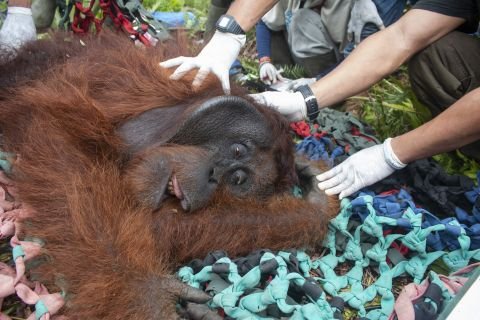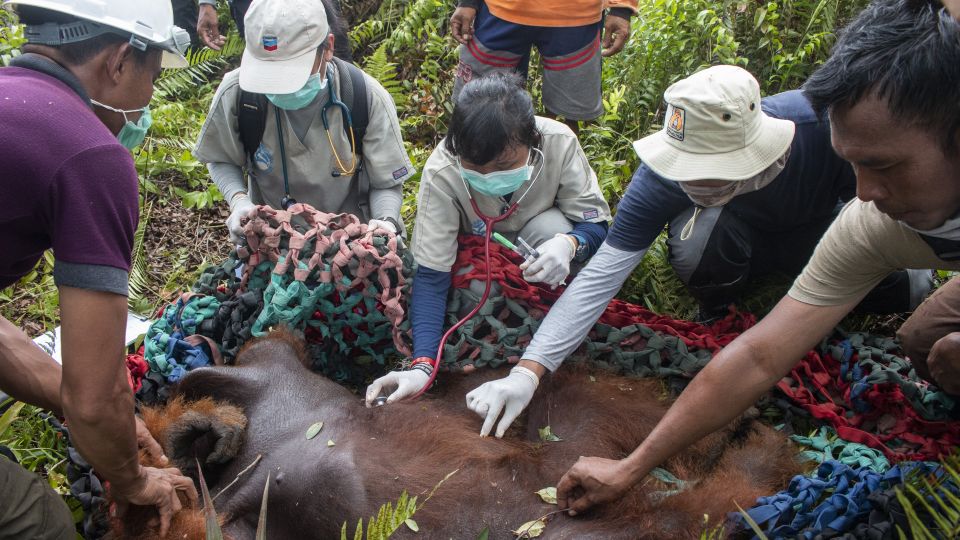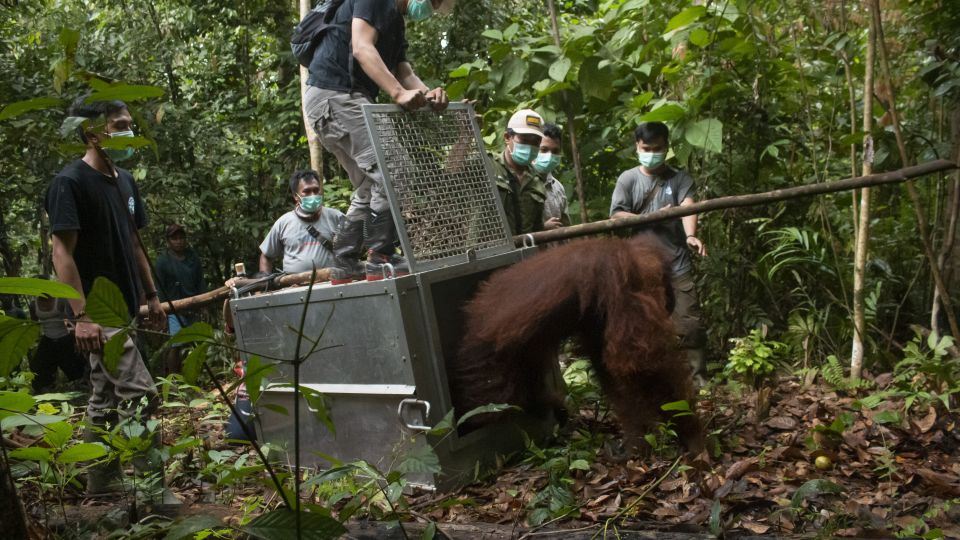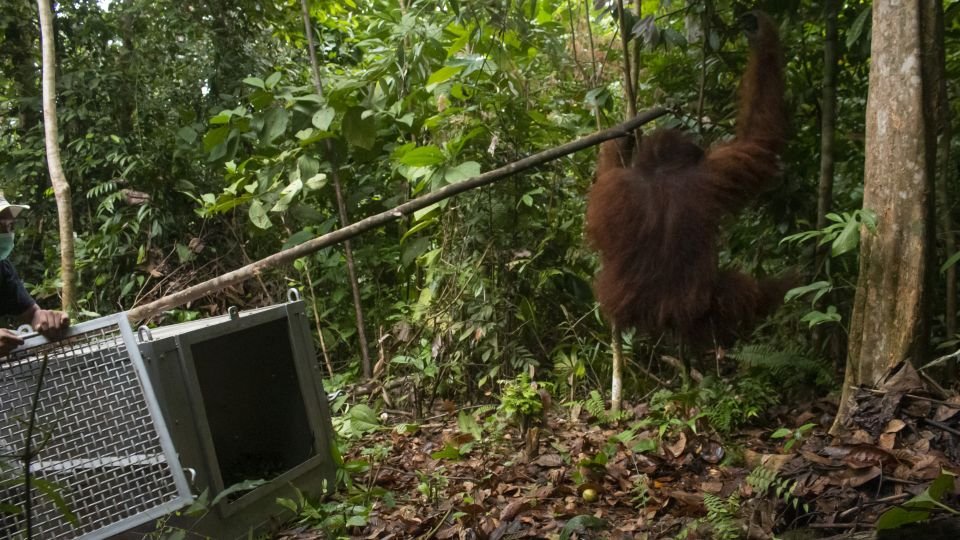
Our team in Indonesia has worked with the management of Gunung Palung National Park (BTNGP) and the forestry department of West Kalimantan (BKSDA) to move an orangutan to the safety of Gunung Palung National Park (GPNP.) The orangutan was moved from a garden belonging to the residents of Jalan Ketapang-Tanjungpura to the National Park in Ketapang Regency on Friday 26 October.
The male orangutan, named Nayo by the rescue team, was estimated to weigh more than 60 kg and to be more than 20 years old. His presence in the garden was first reported by residents at the end of August. In response to that report, IAR Indonesia fielded its Orangutan Protection Unit (OPU) to carry out conflict mitigation with the local residents and drive the orangutan away from the garden. However, because the forest had already been cleared and converted to plantations, the orangutan kept returning to the garden in search of food. According to monitoring by the OPU team using aerial photos and videos of the area, there was no longer sufficient forest to sustain the orangutan.

Consequently, IAR Indonesia, the BKSDA and BTNGP agreed to carry out the translocation of the orangutan to the National Park. The translocation was carried out in accordance with IAR’s Standard Operating Procedures for the rescue of orangutans to prevent conflict between humans and wildlife. Nayo was anaesthetised by one of IAR’s vets and while under anaesthetic, the orangutan’s condition was checked and he was confirmed to be healthy and so could be translocated.
Nayo was translocated to Bukit Daun Sandar, Desa Bay Bayur, Resort Sempurna, Gunung Palung National Park on 26 October. The location was selected because of the low density of the existing orangutan population in the area, the availability of adequate food, and the existence of a natural boundary in the form of the river to help keep the orangutan out of harm’s way.

M Ari Wibawanto, Head of Central Gunung Palung, said: “Already this year three wild orangutans have been translocated into the GPNP area. We believe in future more and more orangutans will need to be brought here owing to conflicts caused by the fragmentation of orangutan habitat. For the time being, we are able to provide support for translocated orangutans. But there will be a limit as to how many animals the area can sustain.
“For that reason there is an urgent need for the many stakeholders involved to ensure there are sufficient connected areas of habitat set aside for wildlife. “
Sadtata Noor Adirahmantacall for an increase in wildlife conservation efforts. There needs to be an expanded network of cooperation between all parties involved in matters of wildlife - government departments, the private sector, NGOs and the world at large which needs to be better educated on these issues.”

Karmele Llano Sanchez, Programme Director of IAR Indonesia, said: “The smooth and successful translocation of this orangutan was the only solution in this situation, where there was a serious threat of human-orangutan conflict. But it is not a solution to the underlying problem which is the devastation of the landscape.
To be successful, landscape conservation programmes require the cooperation of all stakeholders, not only local residents and government, but also the company that has plantations in or around orangutan habitat. In this instance, we were able to work with the West Kalimantan BKSDA and Central department of Gunung Palung National Park to find a solution to the problem, as the orangutan was found in a residential area bordering directly on the national park. Let’s hope we don’t have any further problems in the area in future.

